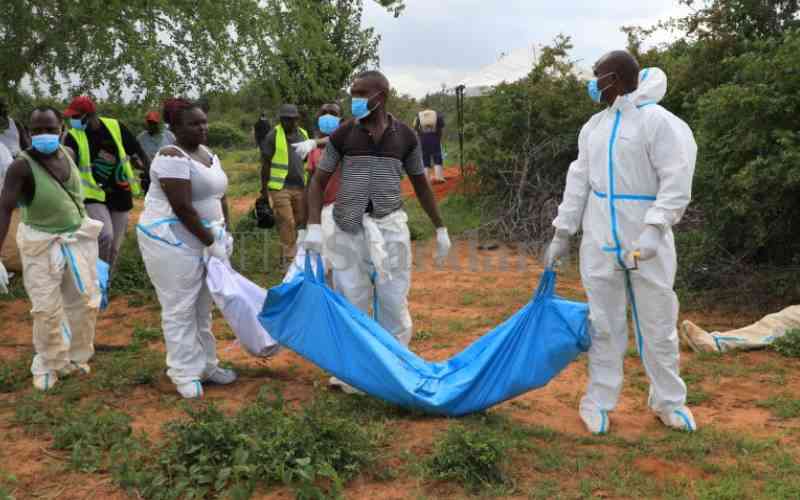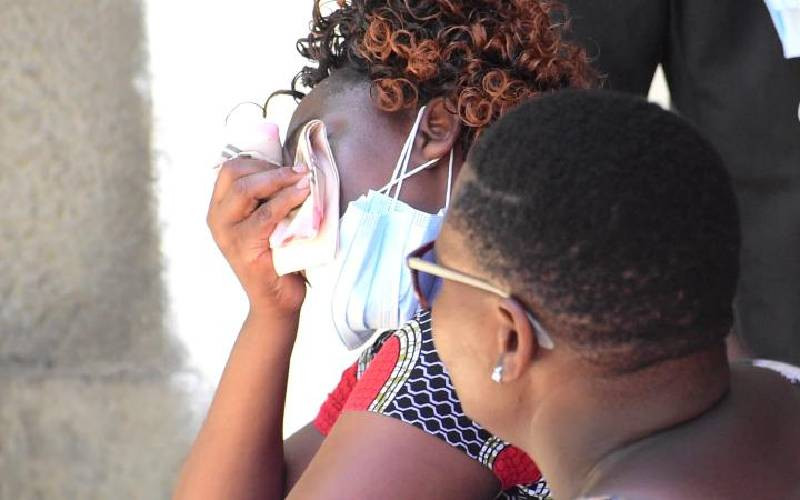The recent report by the Truth Justice and reconciliation Commission (TJRC) citing the Giriama massacre has kicked off a major debate with many seeing avenues for compensation by the British Government.
Community leaders in Kilifi County have embraced the report on the massacre and are studying it with a view of instituting legal proceedings to demand compensation in a fashion similar to the Mau Mau veterans’ suit.
“The report is factual and we are studying it carefully. Depending on additional evidence we may gather and financial support, we will consider taking the Mau Mau veterans’ action against the British government for atrocities against the Giriama,” says lawyer and prominent Giriama traditional kaya elder Joseph Mwarandu.
One of the most shocking incidents during the rebellion was when spiritual leaders among the Giriama, the Gohu were rounded up and burned together with sheep and goats.
Tales of torture
“Kenya’s colonial history was characterised by mass killings that occurred in the context of colonial resistance. The Giriama rebellion took place between 1912 and 1914. Tales of this rebellion continue to be passed down from generation to generation. The rebellion was led by a woman, Mekatilili wa Menza,” says a section of the report.
Mwarandu confirmed that a team from the TJRC visited Kilifi County and recorded evidence from residents at the Malindi District Cultural Association (Madca), which holds annual festivals in honour of Mekatilili.
A researcher at Madca John Mittsanze claims they have gathered new evidence of arbitrary killings, torture and dispossession of locals by the British, which required compensation and not mere window dressing.
He estimates up to 5,000 people could have died in the rebellion, a matter he wants treated just like the Mau Mau.
“We cannot pursue the path of forgiveness because many people died and large tracts of land were taken up by the British at the Coast,” Mitsanze says.
Leaking info
He claims Pastor Simon Kadisa from Vitengeni in Kilifi was among those killed during the British rule after he was accused of leaking information to Mekatilili warriors. A political analyst, Dr Hassan Mwakimako says the British colonial government left a hurting legacy, which was perpetrated by the Kenyan government, which failed to assist communities in addressing the atrocities they had suffered.
“There is evidence that communities suffered but the Government did not take up the cases on behalf of her citizens such as members of the Mau Mau or in the case of the Giriama rebellion. Zimbabwe through President Robert Mugabe tried to address similar injustices committed by the colonial government through seizure of land from the White farmers,” he explains.
Dr Mwakimako says the Coastal communities were disenfranchised and lost land to the colonial government.
“In the case of the Giriama, there has been concrete evidence to withstand trial in the courts. I think the descendants of Mekatilili can present such evidence and seek compensation or apology from Britain,” he says.
Stay informed. Subscribe to our newsletter
Church missionary
According to the TJRC report, the first contacts between the Giriama and the British took place in the 1840s through the Church Missionary Society (CMS) mission in Rabai, Kilifi County, near Mombasa.
The Imperial British East Africa Company ( IBEAC) was largely uninterested in Giriama territories as they did not offer much
Commercial potential
The British administered the coastal region indirectly using existing Arab-Swahili personnel inherited from the Mazruis, the former rulers of the coastal strip.
But this suddenly changed in 1912 when regional assistant district commissionerArthur Champion was deployed at Mount Mangea. According to the TJRC, Champion was shocked by the lack of British influence on the Giriama. His first priority was to impose taxes on the Giriama.
Champion undertook a census and mapping exercise that would be used to determine who would pay tax and how much. He started encountering resistance.
“People would run and hide in the forests and bushes when headcounters were spotted. Public works projects were sabotaged. A few taxpayers were added to the roll but their payments came not from wages from the local labour market, but from Arab-Swahili money lenders,” the report says.
The report handed over to President Uhuru Kenyatta recently says the Giriama resistance was inspired by Mekatilili wa Menza, and her son-in-law Wanje wa Mwadarikola.
“Mekatilili was a 70-year-old woman who had shown affection for activism. When she was younger, her brother was kidnapped by Arab slave traders. She spent many years organising small pockets of Agiriama to hide from slave traders,” says the report.
The Giriama uprising employed guerrilla-style skirmishes during which warriors targeted homes and properties of converts to Christianity and government employees.
They also cut telegraph lines. On at least two occasions, however, the Giriama were drawn into open encounters with the King’s African Rifles (KAR). It was during these encounters that mass killings took place, TJRC explains.
The first took place near Jilore where about 1 000 Giriamas were assembled when they were ambushed by a small contingent of KAR forces under the command of one Captain Carew. Carew and his men opened fire.
“Official reports list 30 fatalities and an unspecified number of casualties. Some Giriama would have succumbed to their injuries later and the death toll was thus probably higher than 30,” says TJRC.
It says KAR operations in and around Giriama territory were characterised by a casual brutality. There are accounts of, for instance, soldiers simply emerging from river banks and shooting at anything that moved; they made no attempts to determine whether they were firing at combatants or civilians.” There are also reports of KAR firing into the backs of fleeing civilians. Seven were killed in this manner at Magogeni village,” the report says.
The report says details of another massacre involving the Gohu; elders respected for their ability to communicate with ancestral spirits, came to light through Giriama legends.
Mekatilili was quick to recruit the Gohu into the rebellion. She needed their authority to draw in wider members of their community and their skills for preparation of poisons, spells and potions for warriors as they went to battle.
“Like many other African societies, the Giriama believed their cultural and religious beliefs protected them against the Europeans,” TJRC says.
After Mekatilili’s capture and subsequent detention in Kisii, the Gohu became the fulcrum around which the uprising revolved.
They thus became the target of the administration’s military campaigns. A British officer known locally as Mugamara, TJRC says, summoned members of the Gohu for a meeting near Kilifi.
“At the meeting several Gohu members were shot dead and their bodies burned in a heap,” the report says of the alleged British brutality.
TJRC adds: “What happened at Kilifi is so notorious not for the number of deaths but the impact the deaths had. The Giriama were severely affected by Mugamara and his men attacking their spiritual elders. The fact that the killings took place in a kaya caused even more distress.”
 The Standard Group Plc is a
multi-media organization with investments in media platforms spanning newspaper
print operations, television, radio broadcasting, digital and online services. The
Standard Group is recognized as a leading multi-media house in Kenya with a key
influence in matters of national and international interest.
The Standard Group Plc is a
multi-media organization with investments in media platforms spanning newspaper
print operations, television, radio broadcasting, digital and online services. The
Standard Group is recognized as a leading multi-media house in Kenya with a key
influence in matters of national and international interest.
 The Standard Group Plc is a
multi-media organization with investments in media platforms spanning newspaper
print operations, television, radio broadcasting, digital and online services. The
Standard Group is recognized as a leading multi-media house in Kenya with a key
influence in matters of national and international interest.
The Standard Group Plc is a
multi-media organization with investments in media platforms spanning newspaper
print operations, television, radio broadcasting, digital and online services. The
Standard Group is recognized as a leading multi-media house in Kenya with a key
influence in matters of national and international interest.








